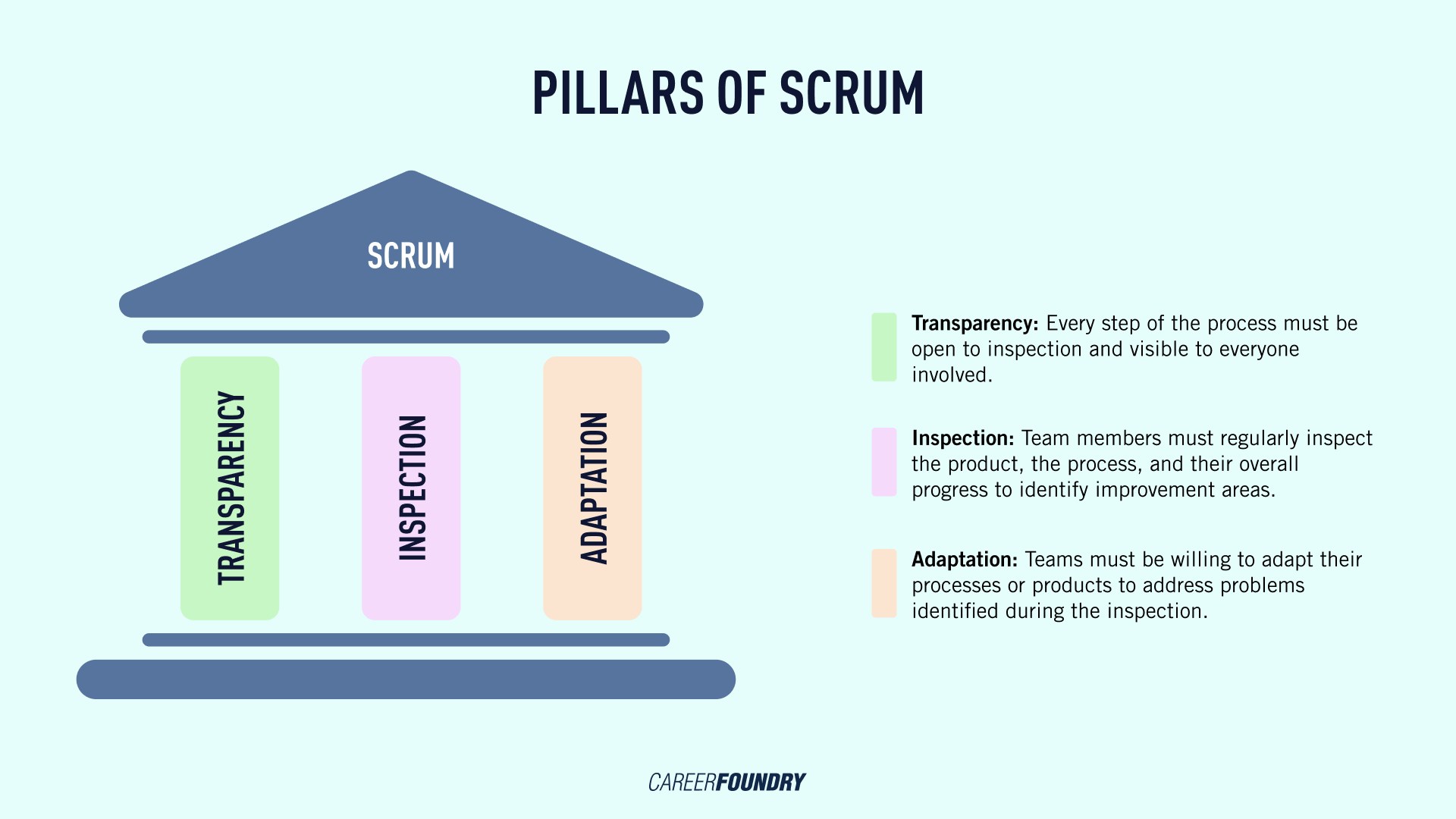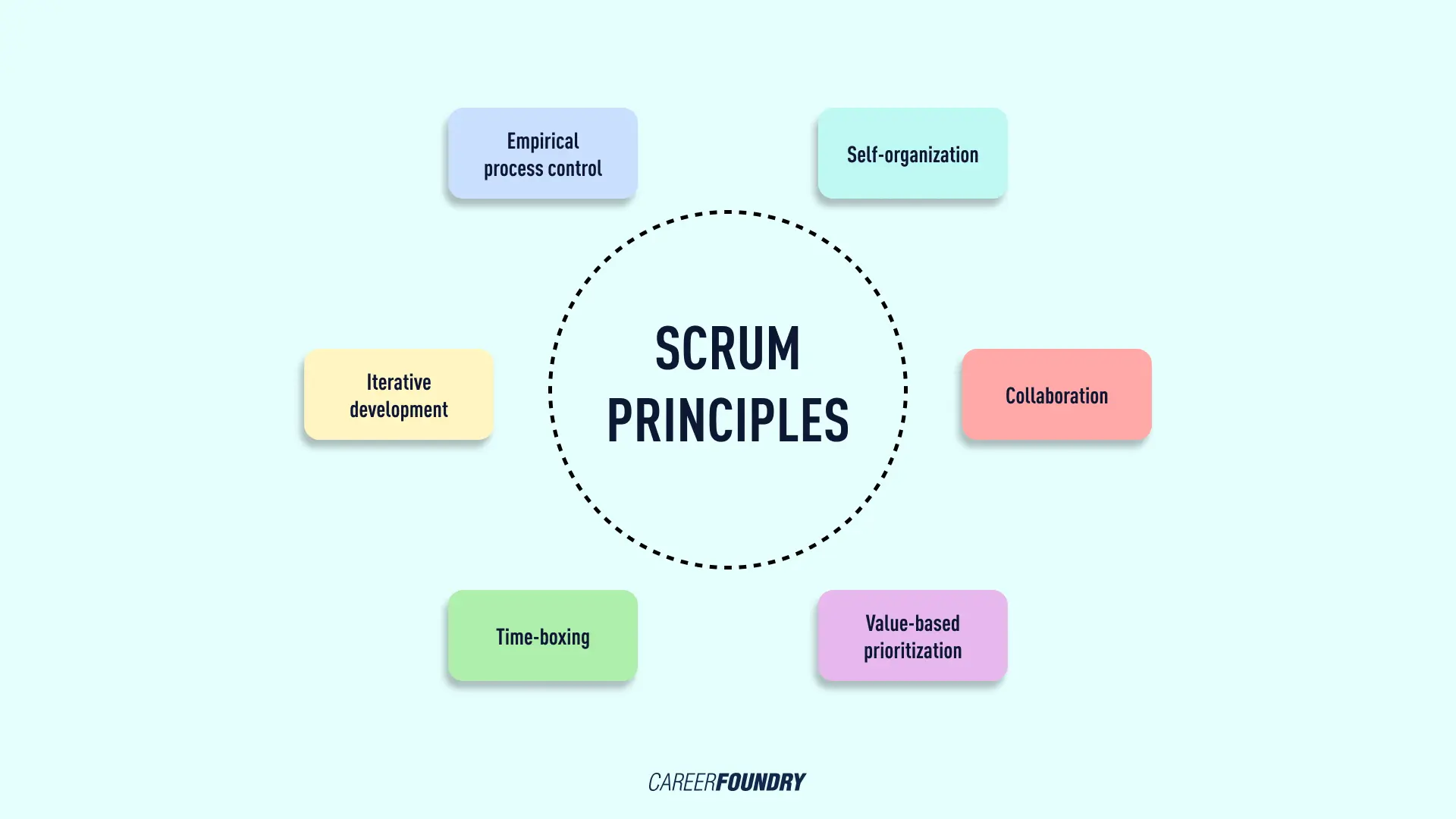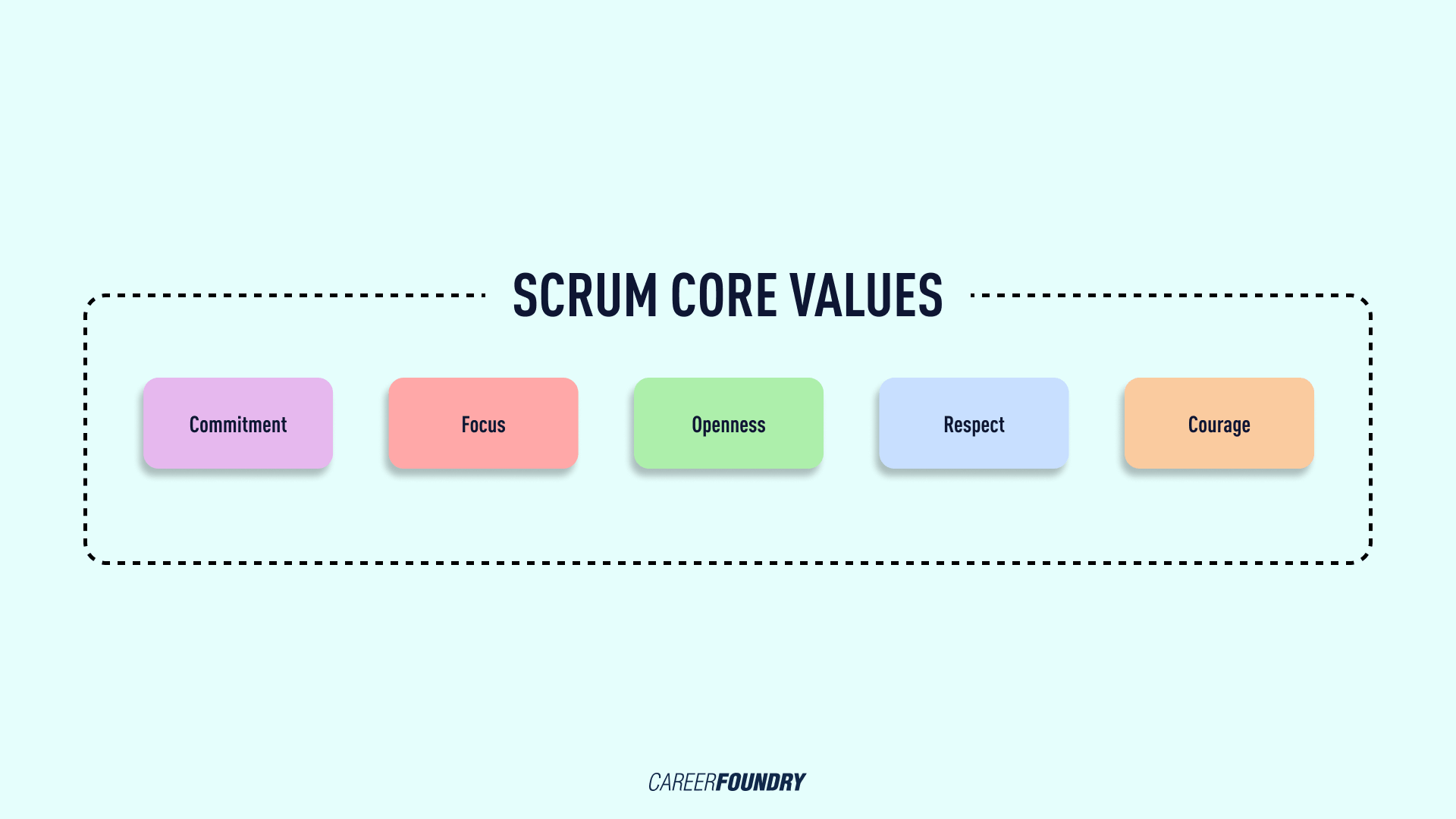As anyone in the field will tell you, product management can be highly rewarding. But to fully unlock its potential, you need to understand some basics.
This often includes the Scrum project management framework. Specifically targeted at software product development, Scrum helps teams work together to create high-quality products.
However, to successfully implement Scrum, product managers need to understand what it is, how it works, and why it’s beneficial. This introductory guide covers everything you need to know if you want to use Scrum as a product manager. Using plain language to keep things simple, we’ll explore the following topics:
- What is Scrum?
- What is Scrum used for?
- A quick guide to Scrum terms
- Scrum vs Agile
- How product managers work with Scrum
Ready for a high-level introduction to Scrum? Then let’s jump in.
1. What is Scrum?
Scrum is a software development framework that emphasizes teamwork, collaboration, and iterative progress. But how exactly does it work?
In a nutshell, the Scrum methodology involves short bursts of work, known as sprints. Each sprint focuses on specific goals as one step in a larger project. A sprint typically lasts for about two weeks (give or take) and at the end of each sprint, teams jointly review their progress to identify and iron out any problems before progressing to the next sprint.
This process is repeated on a new set of objectives, steadily pushing the project’s progress forward.
Scrum is useful because it helps teams work together more efficiently to create high-quality products. Naturally, this is important in a world where product development teams are under increasing pressure to deliver faster and more efficiently, enabling them to stay ahead of the competition.
A brief history of Scrum
Ever wondered why it’s called Scrum? There are many acronyms in product management.
However, Scrum is not one of them. The term was coined in a 1986 paper called “The New New Product Development Game”. The paper described a new way of developing products, with the name inspired by the scrum formation in the game of rugby.
The paper’s authors proposed that businesses could improve their product development processes by adopting a similar team-based approach. Since then, Scrum has been widely adopted by software development teams.
Today, it’s one of the most popular software and product management methodologies ever created and is used by countless organizations around the world, from small businesses to large enterprises.
Scrum pillars
Three core pillars underpin the Scrum methodology: transparency, inspection, and adaptation. We can apply these to all Scrum projects.

Transparency means every step of the process must be open to inspection and visible to everyone involved. It’s an equitable process—leave no-one out.
Inspection means team members must regularly inspect the product, the process, and their overall progress to identify improvement areas. It should create a culture where everyone is open to sharing honest feedback.
Adaptation means teams must be willing to adapt their processes or products to address problems identified during the inspection. Scrum is not the place for close-mindedness or resistance to new approaches! Innovation is at its core.
Scrum principles
On top of these, there are six key principles for Scrum. Let’s briefly go over them:

1. Empirical process control
The easiest way to define it is by stating its opposite, which is defined process control. This is where before a project begins, everything is planned for and understood. The Waterfall method of planning is closely built on this.
Empirical process control, on the other hand, is expecting the unexpected. Agile and lean methods are based on this Scrum methodology.
This principle is supported by the three scrum pillars we discussed earlier. Without any of the three, there’s no way it can flourish.
2. Self-organization
Because a scrum team involves so many different stakeholders and individuals, being able to organize yourself independently is key to a project’s success.
Once again, ensuring that the scrum pillar of transparency is put into effect is central to effective self-organization, so that everyone knows where everyone stands. It also aids with being able to judge the amount of input each individual is making to the team and project.
3. Collaboration
Sure it’s of the more obvious Scrum principles out there considering how many roles are involved, but it shouldn’t be understated.
In Scrum, collaboration is based off three key dimensions: awareness, articulation, and appropriation.
4. Value-based prioritization
Prioritization is vital to a product manager. As the name suggests, this involves organizing tasks based on which brings the maximum business value, at the beginning as well as throughout the duration of the project.
This is why prioritization frameworks, such as Weighted Shortest Job First (WSJF), are a key part of agile product management and Scrum.
5. Time-boxing
Key to the project’s productive nature is making sure that time-wasting is at a minimum. The best way to do that is to allot a certain amount of time for different sections of the project and keep track of them.
This is why in Scrum, time is divided up into sprints. These are typically two-week boxes of time in which to accomplish tasks or a project. Drilling down, sprints themselves are divided up into measured time boxes, with sprint planning meetings and daily stand-ups also having strict running times.
6. Iterative development
Because Scrum is an ongoing process (one sprint follows another), there are many opportunities to tweak and fine-tune it throughout the course of a project.
This ritual repetition and optimization means that the overall product is constantly being improved as well.
Scrum core values
In addition to Scrum’s core pillars and its practical principles, it also adopts five broader guiding values.
It’s vital that everyone taking part in the Scrum process engages with and exhibits these values for the project to be a success.

So, what are Scrum’s core values? In short, they are:
- Commitment
- Focus
- Openness
- Respect
- Courage
Though more loosely defined, these values are arguably even more fundamental to Scrum’s ethos than its principles.
A successful approach involves living these values to promote a culture of teamwork, collaboration, and open-mindedness, all of which are vital for the methodology to be successful. Stick ‘em on a Post-It over your desk!
2. What is Scrum used for?
While this post explores what is Scrum’s applications in product management, it can be used for a wide array of software projects. It’s not even limited to software development. It can be used for any complex, innovative scope of work.
Some common examples include:
- Website design and development
- Software application development
- Marketing campaigns
- Large construction projects
In general, Scrum is well suited to complex or unpredictable projects where traditional or project management methods may be less effective.
3. A quick guide to Scrum terms
As with any project management methodology, Scrum uses several unique terms that product managers need to learn. Here are some key ones to know:
Sprints: A period of time (usually 2-4 weeks) during which a team works on delivering a defined set of objectives.
Artifacts: The information a scrum team uses to detail the product and the required actions to develop it. Examples include the sprint backlog, the product backlog, and increments.
Increments: The deliverable/s that results from a sprint.
Sprint backlog: A list of tasks that need to be completed during a sprint.
Product backlog: A list of all the tasks that need to be completed to finish the overall project.
Burndown chart: A working report that displays the remaining work that needs to be completed during a sprint.
Ceremonies: Regular meetings during a Scrum project that ensure the team is on the same page. Examples include standups and retrospectives.
Standups: Daily meetings where team members discuss what they have done, what they are working on, and any obstacles they face.
Retrospectives: Meetings at the end of a sprint, where the team discusses what went well and what could be improved. Learn more about them in our full guide to sprint retrospectives.
Scrum master: The person responsible for leading the Scrum team and facilitating the overall process.
For a more detailed list, check out the official Scrum glossary.
4. Scrum vs Agile
If you’re exploring Scrum, you might have also stumbled across the term “Agile.”
While Scrum and Agile are sometimes used interchangeably, they’re not quite the same thing.
Agile describes a broad project management approach that emphasises flexibility, while Scrum is just one framework for implementing an Agile approach. In other words, Scrum is a tool for achieving the goals of Agile.
The main difference between the two is that Scrum is prescriptive, while Agile is principles-based. Scrum lays out specific roles, responsibilities, and processes for delivering a successful project. Agile, meanwhile, provides a set of customizable guidelines that can be adapted to fit the needs of a particular project or framework.
So, if you’re wondering whether you should use Scrum or Agile for your next project, the answer is not quite that simple. If you need a defined process to follow, Scrum is a good option. But other Agile project management methodologies exist, too.
Depending on your needs, some of these might be a better fit. Some examples include:
Deciding which approach is suitable requires a discussion with your stakeholders and developers. Ultimately, the goal is to find a process that works for everyone while also helping to deliver a successful product.

5 . How product managers work with Scrum
Product managers play a key role in Scrum projects. For instance, they are responsible for ensuring that the product backlog is up to date and that the team is working on the most pressing tasks. They also need to communicate regularly with wider stakeholders to ensure everyone is on the same page.
During sprints, product managers should also attend standups and retrospectives, be on hand to answer questions and provide clarification on any issues that arise. Meanwhile, outside of sprints, product managers are in charge of tracking the overall progress of a project to ensure it’s on track to meet stakeholders’ expectations. They’ll also need to be prepared to adapt the product backlog as new information or issues arise.
Overall, product managers need to be proactive and have a good understanding of the product being developed, as well as the Scrum process itself. This helps them make decisions quickly when required.
What’s the difference between a product manager and a Scrum Master?
You might wonder what the difference is between a product manager and a Scrum Master. The main one is that the former’s responsibility is the product, while the latter’s main responsibility is overseeing the Scrum process.
You can learn much more about what they do in our complete Scrum Master guide.
Of course, these roles aren’t always clearly defined, and there is plenty of crossover. However, the product manager will likely have a clearer vision of the product and its market, while the Scrum Master will facilitate the process itself. Needless to say, both roles work closely together to achieve their shared goals.
6. Wrap-up
So there we have it—a product manager’s quick guide to what is Scrum!
As we’ve covered in this post, Scrum is one of several popular Agile frameworks used to manage software development projects. Based on a set of defined roles, responsibilities, and processes, its main advantage is that it helps keep projects on track by ensuring everyone is aware of their roles and responsibilities.
Luckily, it’s a straightforward methodology to learn. And once you’ve mastered the basics, it can be extremely effective for managing product development cycles.
Want to learn more about product management? Then check out this free 5-day product management short course, or read the following guides:
